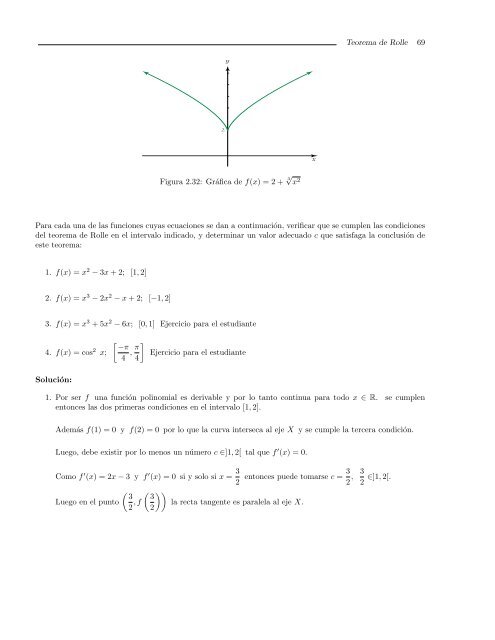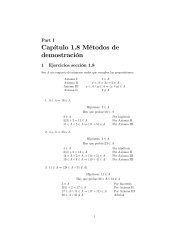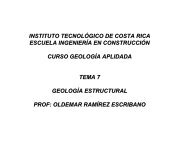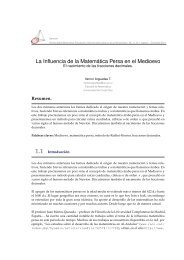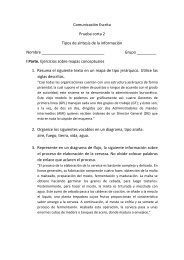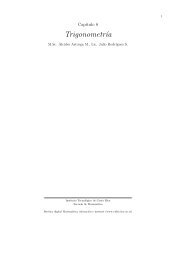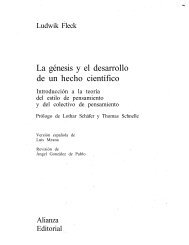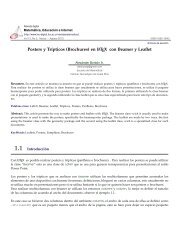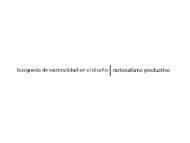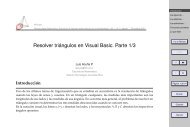Derivada de una función - TEC-Digital
Derivada de una función - TEC-Digital
Derivada de una función - TEC-Digital
Create successful ePaper yourself
Turn your PDF publications into a flip-book with our unique Google optimized e-Paper software.
Figura 2.32: Gráfica <strong>de</strong> f(x) = 2 + 3√ x 2<br />
Teorema <strong>de</strong> Rolle 69<br />
Para cada <strong>una</strong> <strong>de</strong> las funciones cuyas ecuaciones se dan a continuación, verificar que se cumplen las condiciones<br />
<strong>de</strong>l teorema <strong>de</strong> Rolle en el intervalo indicado, y <strong>de</strong>terminar un valor a<strong>de</strong>cuado c que satisfaga la conclusión <strong>de</strong><br />
este teorema:<br />
1. f(x) = x 2 − 3x + 2; [1, 2]<br />
2. f(x) = x 3 − 2x 2 − x + 2; [−1, 2]<br />
3. f(x) = x 3 + 5x 2 − 6x; [0, 1] Ejercicio para el estudiante<br />
4. f(x) = cos 2 x;<br />
Solución:<br />
<br />
−π π<br />
,<br />
4 4<br />
Ejercicio para el estudiante<br />
1. Por ser f <strong>una</strong> <strong>función</strong> polinomial es <strong>de</strong>rivable y por lo tanto continua para todo x ∈ R. se cumplen<br />
entonces las dos primeras condiciones en el intervalo [1, 2].<br />
A<strong>de</strong>más f(1) = 0 y f(2) = 0 por lo que la curva interseca al eje X y se cumple la tercera condición.<br />
Luego, <strong>de</strong>be existir por lo menos un número c ∈]1, 2[ tal que f ′ (x) = 0.<br />
Como f ′ (x) = 2x − 3 y f ′ (x) = 0 si y solo si x = 3<br />
Luego en el punto<br />
<br />
3<br />
, f<br />
2<br />
<br />
3<br />
2<br />
2<br />
la recta tangente es paralela al eje X.<br />
3 3<br />
entonces pue<strong>de</strong> tomarse c = , ∈]1, 2[.<br />
2 2


